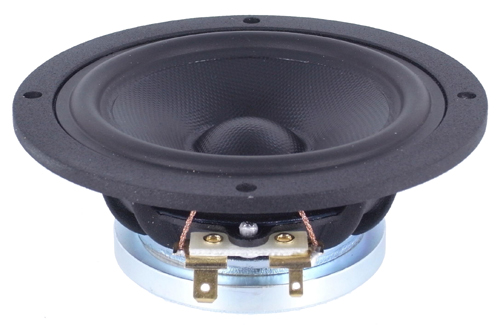Up for test is the Scanspeak Discovery 10F/4424G 4 inch, 4 ohm midrange. This driver features a neo magnet to keep its weight down. Accompanied with the extremely small form factor, this is a top choice for many in car audio and home audio alike. While this is noted as a 4″ midrange, seeing it in person makes it appear to be closer to the 3.5″ driver family relative to other 4 inch drivers. This is a driver I often recommend for its price vs performance over the years.


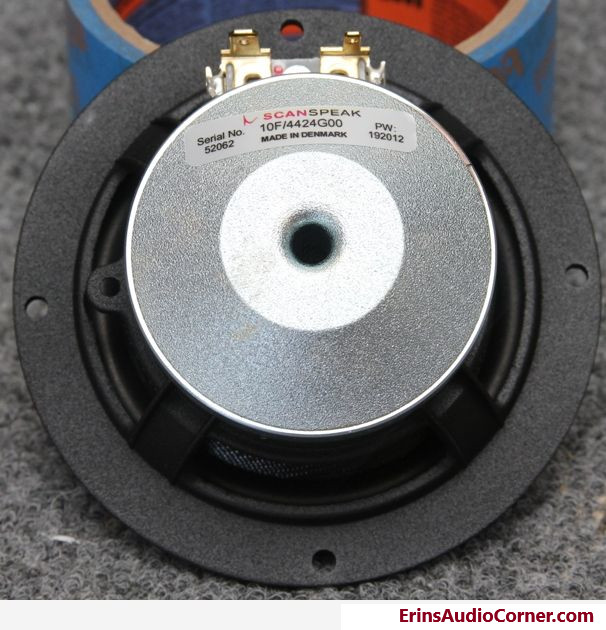
Small Signal Analysis
| Electrical Parameters | |||
|---|---|---|---|
| Re | 3.18 | Ohm | electrical voice coil resistance at DC |
| K | 0.0098 | LEACH inductance model | |
| n | 0.52 | LEACH inductance model | |
| Cmes | 208 | µF | electrical capacitance representing moving mass |
| Lces | 6.58 | mH | electrical inductance representing driver compliance |
| Res | 9.58 | Ohm | resistance due to mechanical losses |
| fs | 136.1 | Hz | driver resonance frequency |
| Mechanical Parameters | |||
| (using add. mass) | |||
| Mms | 3.524 | g | mechanical mass of driver diaphragm assembly including air load and voice coil |
| Mmd (Sd) | 3.266 | g | mechanical mass of voice coil and diaphragm without air load |
| Rms | 1.768 | kg/s | mechanical resistance of total-driver losses |
| Cms | 0.388 | mm/N | mechanical compliance of driver suspension |
| Kms | 2.57 | N/mm | mechanical stiffness of driver suspension |
| Bl | 4.116 | N/A | force factor (Bl product) |
| Loss factors | |||
| Qtp | 0.447 | total Q-factor considering all losses | |
| Qms | 1.704 | mechanical Q-factor of driver in free air considering Rms only | |
| Qes | 0.566 | electrical Q-factor of driver in free air considering Re only | |
| Qts | 0.425 | total Q-factor considering Re and Rms only | |
| Other Parameters | |||
| Vas | 0.764 | l | equivalent air volume of suspension |
| n0 | 0.327 | % | reference efficiency (2 pi-radiation using Re) |
| Lm | 87.34 | dB | characteristic sound pressure level (SPL at 1m for 1W @ Re) |
| Lnom | 88.34 | dB | nominal sensitivity (SPL at 1m for 1W @ Zn) |
| Sd | 37.28 | cm² | diaphragm area |
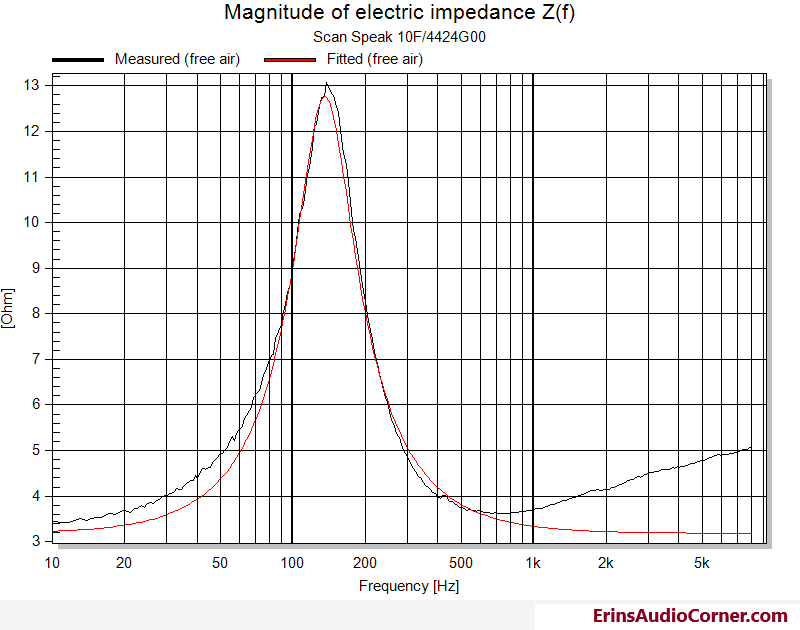
Large Signal Analysis with Klippel’s LSI Module
| Displacement Limits | thresholds can be changed in Processing property page | ||
|---|---|---|---|
| X Bl @ Bl min=82% | 1.4 | mm | Displacement limit due to force factor variation |
| X C @ C min=75% | 1.7 | mm | Displacement limit due to compliance variation |
| X L @ Z max=10 % | >2.2 | mm | Displacement limit due to inductance variation |
| X d @ d2=10% | 8.8 | mm | Displacement limit due to IM distortion (Doppler) |
| Asymmetry (IEC 62458) | |||
| Ak | 8.89 | % | Stiffness asymmetry Ak(Xpeak) |
| Xsym | 0.95 | mm | Symmetry point of Bl(x) at maximal excursion |
| Xpse | 2.7 | mm |
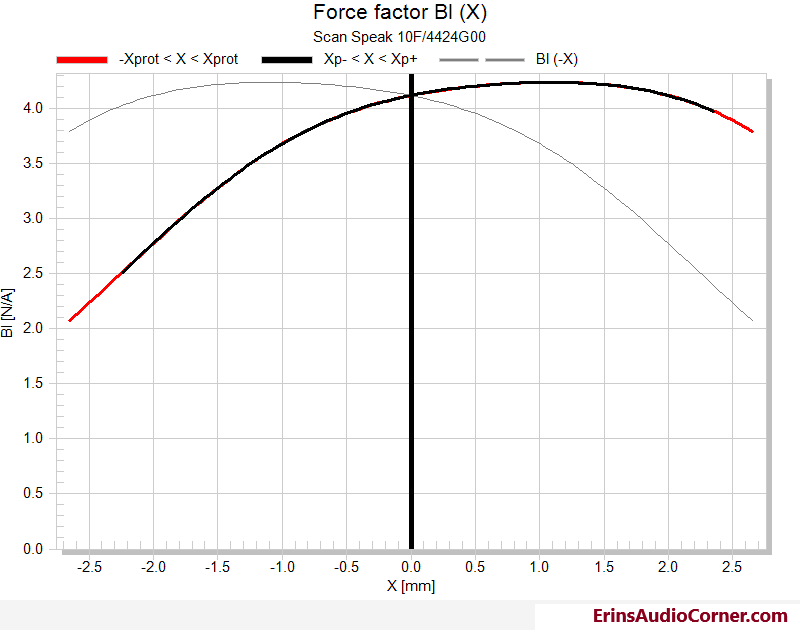


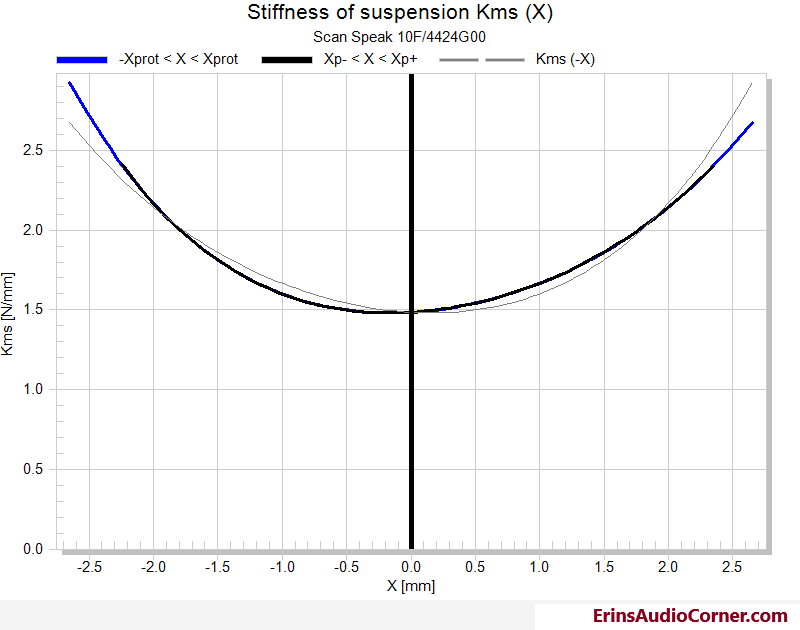
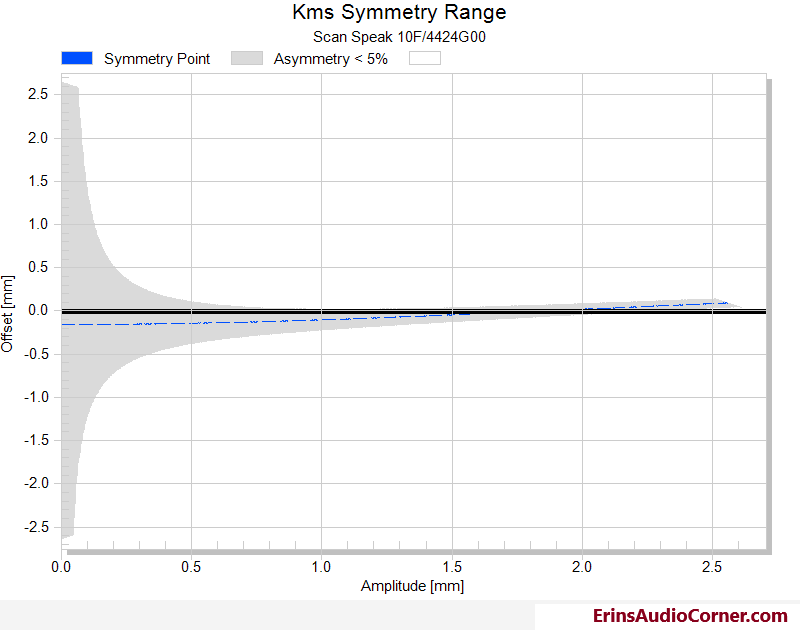
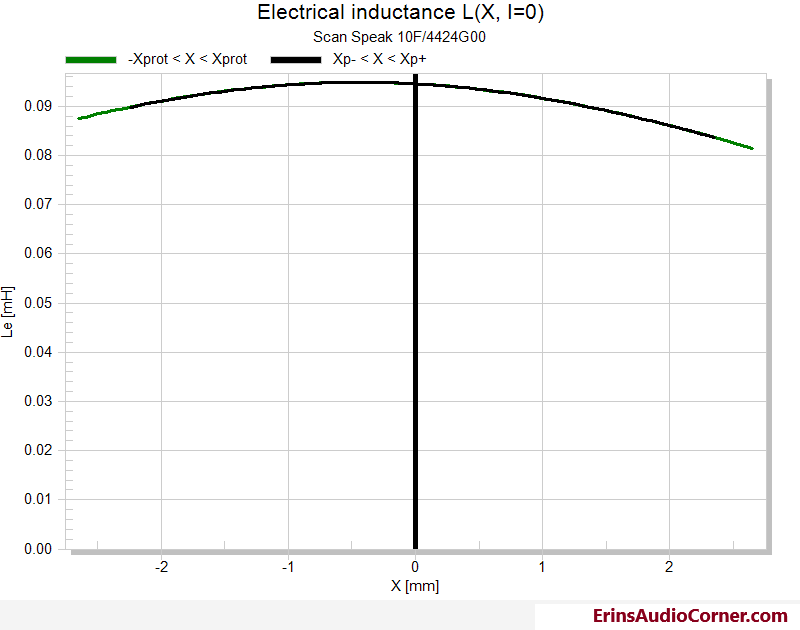

Frequency Response with Klippel’s TRF Module
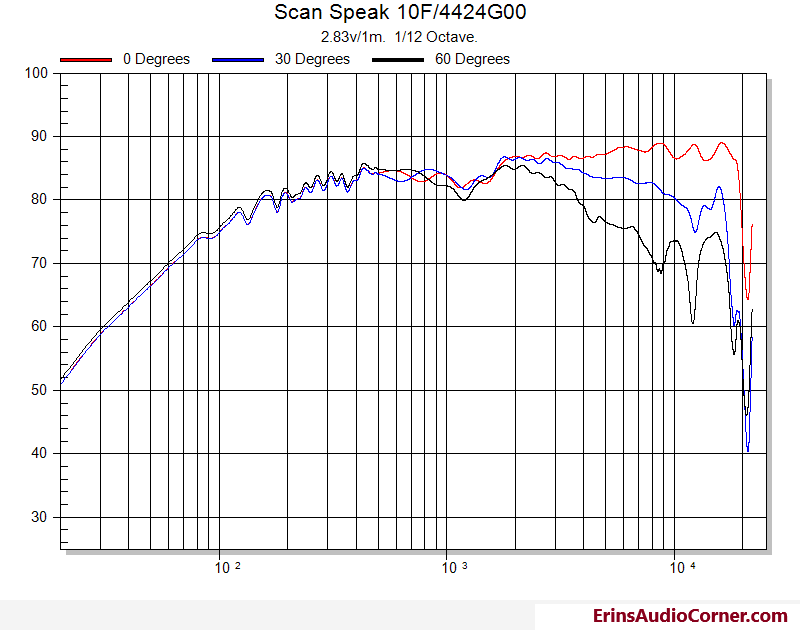
Harmonic Distortion with Klippel’s TRF Module
The following is HD results at both 90dB/1m and 96dB/1m equivalent. Note: The bump in HD around 400hz is due to a loose part on the test baffle and should be ignored (verified through multiple tests and accelerometer placement).
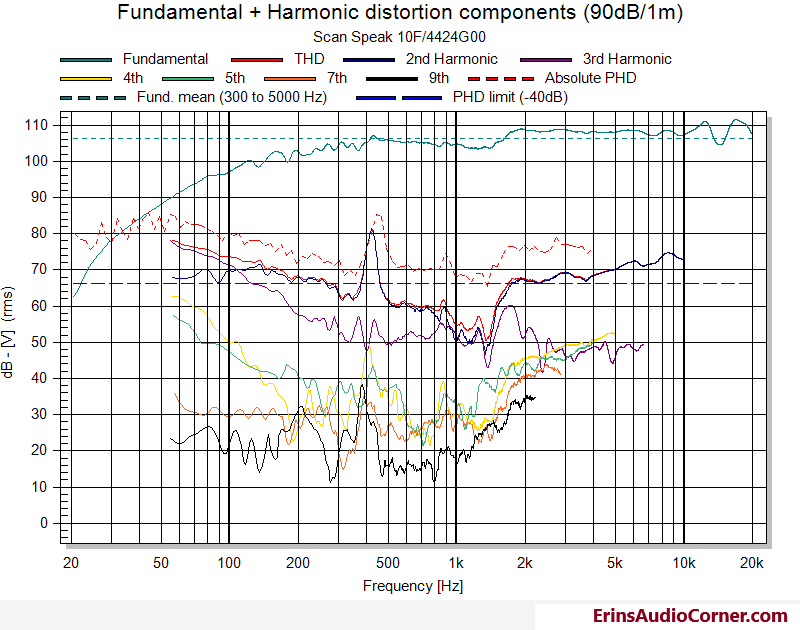
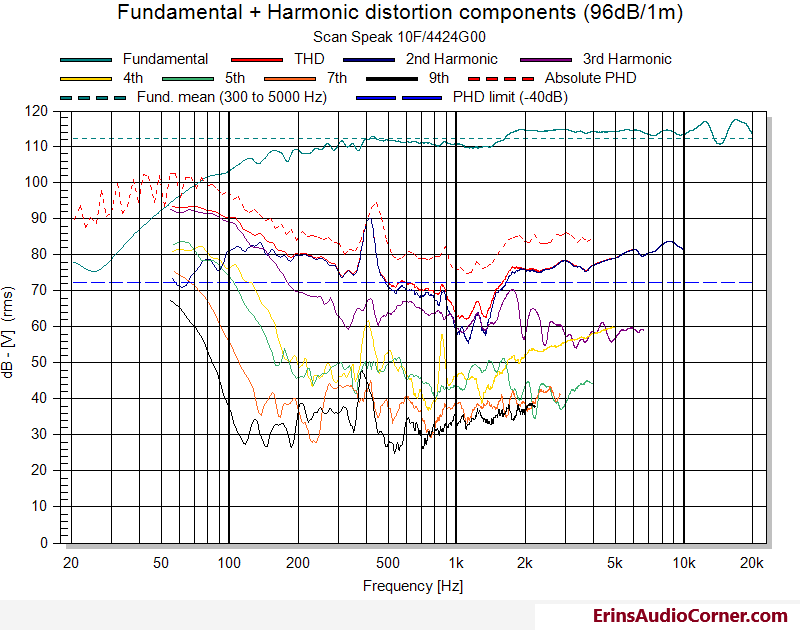
Cumulative Spectral Decay
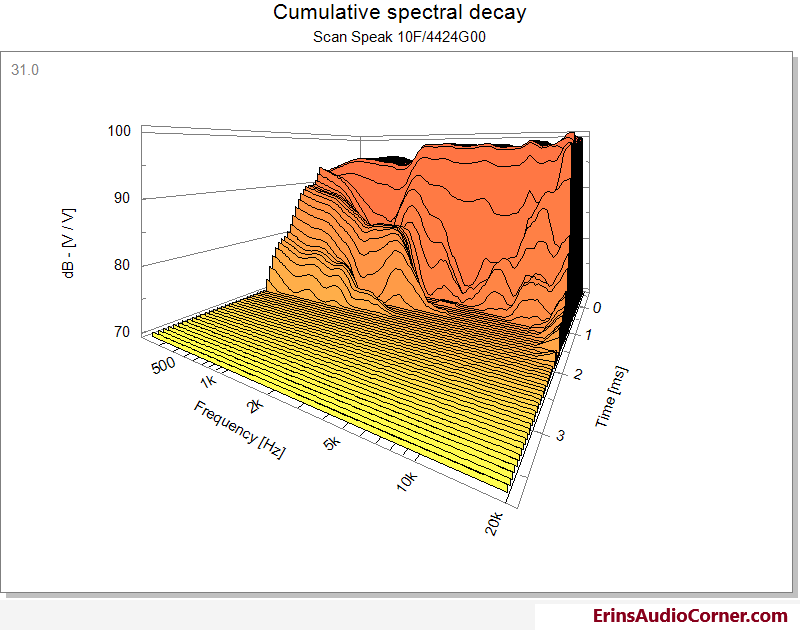
What does this show? That there is no long standing modal issues due to cone breakup. So, basically, nothing to see in this regard.
Thoughts
As this is a pure midrange, while the xmax values provided by the Klippel LSI are low, they aren’t frightening because it’s expected you’ll not push this driver too hard in terms of excursion. If you want to cross low, there’s not a lot of displacement so it’s best to use this with a woofer and cross above 300hz. Judging by the rolloff, toward an Fs of 136hz, you’ll likely need to EQ assist the response below 400hz. Another benefit of this driver is it doesn’t require a large enclosure. My measured Vas is approximately 0.7L, and the lower Qts of 0.45 allows you to go a tad below the Vas value to reach a Qtc of 0.707.
The overall frequency response of this driver is pretty nice, maintaining a smooth, but rising response in what I would call two ‘sectors’ of response; divided by 1.5khz. At this point, the response dips a bit and increases by about 3dB to 2khz where it is fairly flat. I’ve never been one to propose using wideband or fullrange drivers due to the lack of top end response and typical varying response above the pistonic range (aka: tweeterless) but in this case, I think one would be OK to do so given the extension through 20khz and smooth, controlled off-axis response. There are no major nodal issues to speak of here; it seems the nomex cone is doing a good job of keeping break up to a minimum.
In line with that, THD results suggest a crossover above 300hz. The bump in HD around 400hz is due to a loose part on the test baffle and should be ignored (verified through multiple tests and accelerometer placement). I tested it a couple times in a couple different manners to see if it showed up consistently and there is nothing in the setup that would be the cause. 3rd order HD is quite nice, staying well below the 1% threshold above 200hz. Subsequent even and odd-order distortion is very low.
All in all, not the world’s best results but as a midrange in a 3-way system crossed above 300hz or (as high as 500hz) this makes a very fine driver.
Also, thanks to the linear frequency response and relative off-axis response one could use this as a wideband driver and build a very nice 2-way speaker with this as well and let this driver handle everything above 300-500hz.
End
If you like what you see here and want to help me keep it going, there’s a Paypal Contribute button at the bottom of each page. Just provide what you can. Every little bit is truly appreciated.
You can also join my Facebook and YouTube pages via the links at the bottom of the page if you’d like to follow along with updates.
Thanks!

